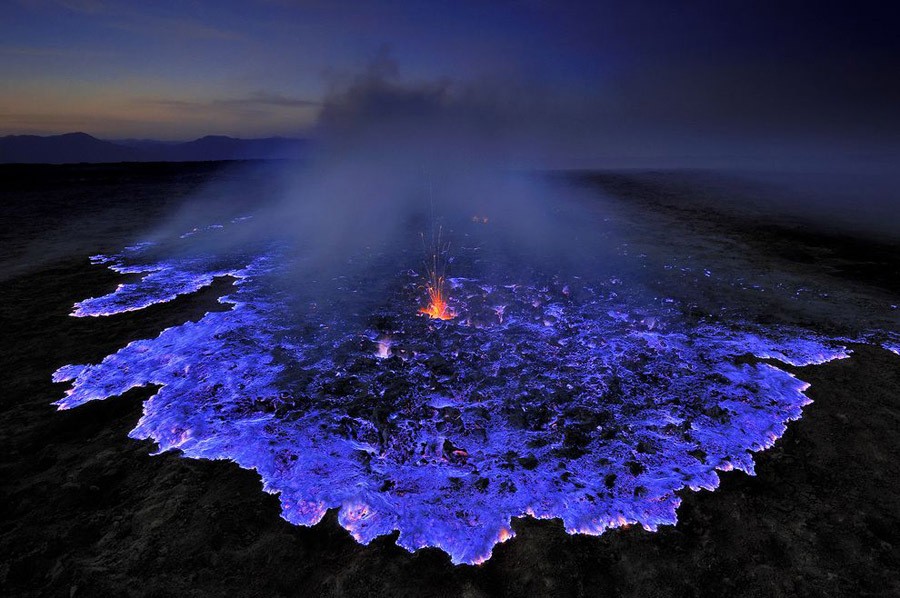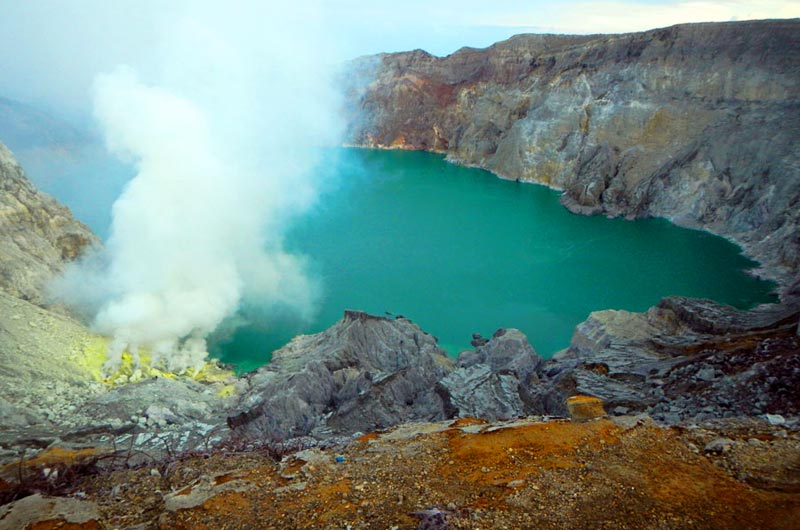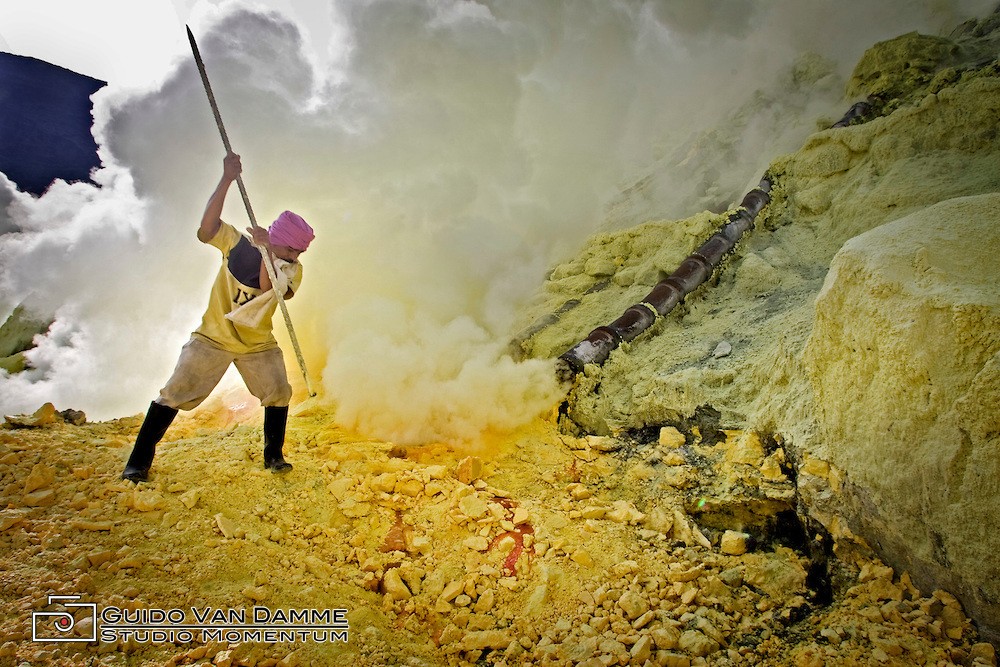A warm, relieving breeze flows west off of the Bali Sea, sweeping over Ijen caldera on the east end of Java, Indonesia. From the abrupt 9,183-foot summit of Gunung Merapi—the highest reaching volcano on the eastern edge of the caldera’s rim—the views of the dramatic landscape are breathtaking.
In a partial-ring, stratovolcanoes speckle the east and southern sides of the 12-mile-wide crater. The caldera, which was previously a volcano itself, collapsed and subsequent stratovolcanoes formed from the alternate layers of lava and ash, while the north ridge became the shape of a bowl.
One of the largest lakes in the world…
In the immediate western side of Gunung Merapi’s summit is the most exquisite site of the cauldron: Kawah Ijen, a volcano with a .6-mile-wide rim, brimming with a brilliantly turquoise lake.
However heavenly the scene appears, the vibrant pool is the world’s largest highly acidic volcanic crater lake. The color is actually the result of the acidic materials in the water: The water boasts a pH level of less than .3 on a scale of 0 to 14 (recall, 7 is neutral), according to Earth Observatory, operated by the NASA Goddard Space Flight Center. Comparatively, vodka has a pH level of about 4.
From the 9,181-foot high pinnacle, the water flows down into neighboring ecosystems, including the Banyupahit River, which sustains agricultural land in the valley. The irrigation water was found to have a pH between 2.5 and 3.5, according to a 2005 study released by the Institute of Ecological Science in Amsterdam. Most pure (drinkable) water has a pH between 6.5 and 8.5, which the World Health Organization summarized in its report, ph in Drinking-water, in 2003.
Sulfur mines of Ijen
Amongst Ijen’s heavenly tones, a sulfur mining operation withstands the risky acidic gases. A pipe system captures gas from the volcano, which then condenses into liquid sulfur inside the pipe and flows to the surface where it cools and hardens from a deep red color to a yellow. Once they solidify, the bright sulfur blocks are extracted and carried out in baskets by the laborers, from the crater to the base.
Our natural world is mysteriously beautiful, and Kawah Ijen is a prime example of its splendor and its paradox. As peoples, we continue to study and understand how to work within our landscapes in order to utilize natural resources. Simultaneously, the conditions can be dangerous or hazardous to our health. It’s vital to create infrastructures that protect our laborers, no matter where the mining site is or how luring it appears.










